Advertisements
Advertisements
Question
Reporting 'Questions' and 'Requests'
The words in these sentences have been mixed up. Put them in the correct order. Direct questions (?) are followed by reported questions ( • ). Study the examples first.
Your seat comfortable is (?)
Is your seat comfortable?
Seat he if asked your comfortable was (•)
He asked if your seat was comfortable.
feeling are you better (?)
___________________________
she if feeling better were asked you (•)
___________________________
did kalias live where the (?)
___________________________
asked he the kalias where lived (•)
___________________________
they will be leaving when (?)
___________________________
asked be he when they leaving would (•)
___________________________
can open the please you window (?)
___________________________
you open asked window could she whether the (•)
___________________________
model how have finished that quickly so you (?)
___________________________
that model quickly so how had finished they asked you (•)
___________________________
Solution
feeling are you better (?)
Are you feeling better ?
she if feeling better were asked you (•)
She asked if you were feeling better.
did kalias live where the (?)
Where did the Kalias live ?
asked he the kalias where lived (•)
He asked where the Kalias lived.
they will be leaving when (?)
When will they be leaving ?
asked be he when they leaving would (•)
He asked when they would be leaving.
can open the please you window (?)
Can you please open the window ? / Can you open the window, please ?
you open asked window could she whether the (•)
She asked whether you could open the window.
model how have finished that quickly so you (?)
How have you finished that model so quickly ?
that model quickly so how had finished they asked you (•)
They asked how you had finished that model so quickly.
APPEARS IN
RELATED QUESTIONS
Answer the following questio briefly.
What does John say about himself since his last meeting with the author?
Answer the following question.
Think about million little ways in which the rain embraces the trees. Mention a few of
them.
On the basis of your understanding of the poem, answer the following question
by ticking the correct choice.
The conscience of the speaker pricks her as she has__________.
Answer the following question briefly.
Why does Jeanne want to buy a villa?
Below are certain words that appear in the story of Amelia Earhart's journey.The meanings have been given in a jumbled order. Match the words with their meanings.
| Words | Meanings |
| 1.Navigator | (a) an infection of the bowels |
| 2.Skirting | (b) a person who flies an aircraft. |
| 3.Dysentery | (c) a person who plans a route for a ship or plane |
| 4.Parachute | (d) to put something in a safe place |
| 5.Cable | (e) to leave something with no intention of returning |
| 6.Precise | (f) to go or around the edge of something |
| 7.Transmit | (g) a device that is attached to people or objects to make them fall slowly and safely. |
| 8.Implement | (h) a small boat made of rubber or plastic that is filled with air. |
| 9.Raft | (i) a set of wires, covered in plastic or rubber that carries electricity or telephone signals |
| 10.Stowed | (j) carry out |
| 11.Aviator | (k) exact |
| 12.Abandoned | (l) to send an electric signal |
(a) Answer the following questions:
- Where were the characters at the time of narration?
- Who was travelling with the aunt?
- How did the children pass their time?
- How long would they take to reach Templecombe?
- How does the aunt respond to the children’s antics? Why do you say so?
(b) You must have used a variety of articles in your answer. Why did you use them? Discuss the reasons with your teacher.
Study the following pair of sentences from the description. Notice the use of
articles-a, an or the or no article (X).
e.g. The next stop was at X Templecombe.
An aunt belonging to the children sat in one corner.
In the corner sat a stranger.
Hence we conclude
1. No article is used before a proper noun.
2. 'The' is used to refer to a specific place/person/ object.
3. 'A' is used when the person/place is referred to for the first time.
4. 'An' is used before a vowel sound.
Carbon Footprint - Project Work
A carbon footprint is a representation of the effect human activities have on the climate in terms of the total amount of greenhouse gases produced (measured in units of carbon dioxide). So, it is a measure of the impact we make individually on the earth; by the choices we make regarding our lifestyle. Many activities generate carbon emissions, which contribute towards accelerating global warming and climate change.
Total carbon footprint/ emission quantification would include energy emissions from human activities - such as, from heat, light, power and refrigeration and all transport related emissions from cars, freight and distribution.
By measuring the carbon footprint through such tools as carbon calculators, we can get a better sense of what the individual impact is and which parts of our lifestyle deserve strict regulation.
In groups, choose and research any one aspect of how we are leaving carbon footprints and how can we modify our lifestyle. Each group will then make a project on the various aspects.
In groups, work on one of the topics mentioned in 8(a)-(g). Research your topic by collecting relevant articles from the print and electronic media (like the National Geographic). Make a power point presentation of 10-12 minutes. You can also use film clippings to enrich your presentation.
(a) SOLAR MISSION
1) To promote the use of solar energy through solar photovoltaic and thermal systems for power generation .
2) To integrate other renewable energy technologies like biomass and wind. 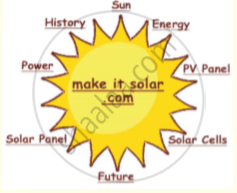
(b) ENERGY EFFICIENCY
1) To mitigate GHG through sector-specific and cross-cutting technology and fuel switch options.
2) To use more LNG and biomass fuels besides seeking tech transfer. 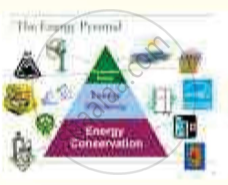
(c) SUSTAINABLE HABITAT
1) To promote energy efficiency in the residential and commercial sectors through LPG use.
2) To manage municipal solid waste and urban public transport in a better way. 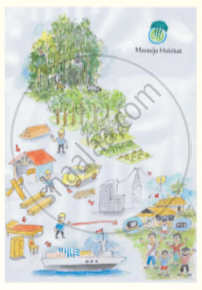
(d) WATER MISSION
1) To promote efficient water use, augment supply in critical areas and ensure effective management of water resources.
2) To have better management of surface and groundwater,and conserve wetlands. 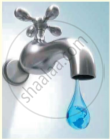
(e) SUSTAINING HIMALAYAS
1) To enhance monitoring and conservation of the Himalayan ecosystems, empower local communities for management of ecological resources and promote sustainable tourism. 
(f) GREEN INDIA
1) To reduce fragmentation of forests, enhance public and private investments for plantation, upscale joint forestry management and promote conservation of biodiversity. Need to afforest degraded lands.
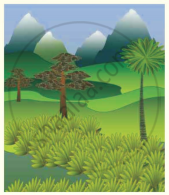
(g) SUSTAINABLE AGRICULTURE :
1) To focus on four crucial areas - dry land agriculture, risk management, access to information and promoting the use of biotechnology.
2) To develop drought and pest resistant varieties. 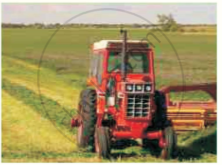
At a party, Gautam met a friend (Ravi) who talked about his experiences in staging a play.
Read the dialogue.
Gautam : It’s quite some time since we met. I guess it’s because you’ve been busy as usual.
Ravi : Yes, I’ve been directing a play – Tagore’s Chandalika. Did you hear about it?
Gautam : Yes, I heard it was a great hit. In fact, I was planning to get in touch with you to ask for your help, to put on a play for our Annual Open Day. How did you go about staging your play?
Ravi : Well …. First, we chose three possible plays, and divided ourselves into reading groups. Then we exchanged views and arrived at a decision.
Gautam : What was your next step?
Ravi : Casting, of course. Once we’d got the script ready, we selected the cast.
Gautam : And then?
Ravi : We held auditions for the main parts and then made a preliminary selection. Eventually we were able to make a final choice and assign the roles.
Gautam : How did you plan your rehearsals?
Ravi : We met for a couple of hours every evening. As the play took shape, we held longer and more intensive rehearsals.
Gautam : Who else was involved in the production?
Ravi : The stage crew and the technicians. But they didn’t come in until we were out of the initial phase.
(The conversation continues.)
Gautam decides to make a written record of how Ravi produced a play in order to try it too.
Write this record, using the passive where appropriate. The first few words have been provided for you.
________________________________________________
Prepositions of Location
Picture Dictation
Work in pairs - Student A and Student B. Student A only (picture given below) - . Keep the picture secret from Student B. Describe exactly what you see to Student B, who must draw the picture from the information given. At the end, compare the two pictures. Draw your picture in the box below.

e.g.
In the middle there’s a small house. Behind the house there are two hills. Several birds are flying over the house…
